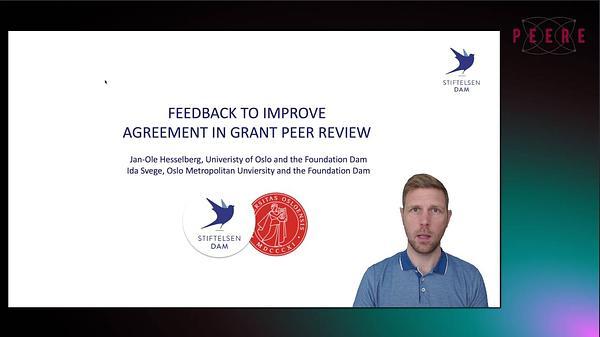Would you like to see your presentation here, made available to a global audience of researchers?
Add your own presentation or have us affordably record your next conference.
keywords:
peer review process and models
preprints
peer review
Objective The ability of peer review to improve the scientific
endeavor (eg, the conduct, reporting, and validity of study
findings) has been questioned,1 and calls have been made to
showcase changes that occurred to each study due to peer
review.2 Until such transparency is achieved, identification
and synthesis of studies that analyzed differences between
preprints or manuscript versions submitted to journals and
peer-reviewed publications is being undertaken.
Design In this stage of the living systematic review, studies
were identified based on authors’ knowledge of the field and
by checking all research at peer review conferences
(presented as podium presentations or posters in the
European Union and USA). References and citations of
identified studies were then checked. For all studies, the
following was extracted: year of publication, sampling
method, conflict of interest, funding, data and protocol
sharing, number of analyzed version pairs, sample size
calculation, scholarly discipline, method used to compare
versions, variables (ie, manuscript sections) analyzed for
changes, and metric with which the changes were quantified
or qualitatively classified.
Results Of 25 studies published from 1990 through the end
of 2021, 16 (64%) analyzed changes between submitted and
published papers and 9 (36%) between preprints and
published papers. Most commonly, changes were analyzed by
filling out questionnaires or scales separately for each of the 2
manuscript versions (11 44%) or by manual comparison of
the 2 manuscript versions (6 24%). The median number of
analyzed version pairs was 59 (IQR, 41-122). Most studies
analyzed changes that occurred in health (18 72%) or social
sciences (4 16%) manuscripts. Overall, studies’ conclusions
indicated very high similarity between version pairs, with the
largest changes occurring in introduction and discussion
sections. Examples of items for which most changes were
found are presented in Table 13.

Conclusions The current results indicate that submitted or
preprinted manuscript versions and their peer-reviewed
journal version are very similar, with main (analysis) methods
and main findings rarely changing. Quantification of these
results is pending. Large differences between studies, type of
manuscript changes, and methods with which they were
measured indicate greater need for collaboration in the peer
review field and creation of the core outcomes measures for
manuscript version changes.
References
1. Tennant JP, Ross-Hellauer T. The limitations to our
understanding of peer review. Res Integr Peer Rev.
2020;5(1):6. doi:10.1186/s41073-020-00092-1
2. Limbu S. Building trust in peer review: a Q&A with Dr
Mario Malički. BioMed Central. September 18, 2020.
Accessed June 24, 2022. http://blogs.biomedcentral.com/on-medicine/2020/09/18/building-trust-in-peer-review-a-qa-with-dr-mario-malicki/
Conflict of Interest Disclosures IJsbrand Jan Aalbersberg is
senior vice president of research integrity at Elsevier. Mario Malički
is a co–editor in chief of Research Integrity and Peer Review. Lex
Bouter, John P. A. Ioannidis, and Steven N. Goodman are members
of the Peer Review Congress Advisory Board but were not involved
in the review or decision for this abstract.
Funding/Support Elsevier funding was awarded to Stanford
University for a METRICS postdoctoral position that supported
Mario Malički’s work on the project.
Role of the Funder/Sponsor IJsbrand Jan Aalbersberg is an
employee of Elsevier and had a role in the design and conduct of
the study; management and interpretation of the data; review and
approval of the abstract; and decision to submit the abstract for
presentation.


